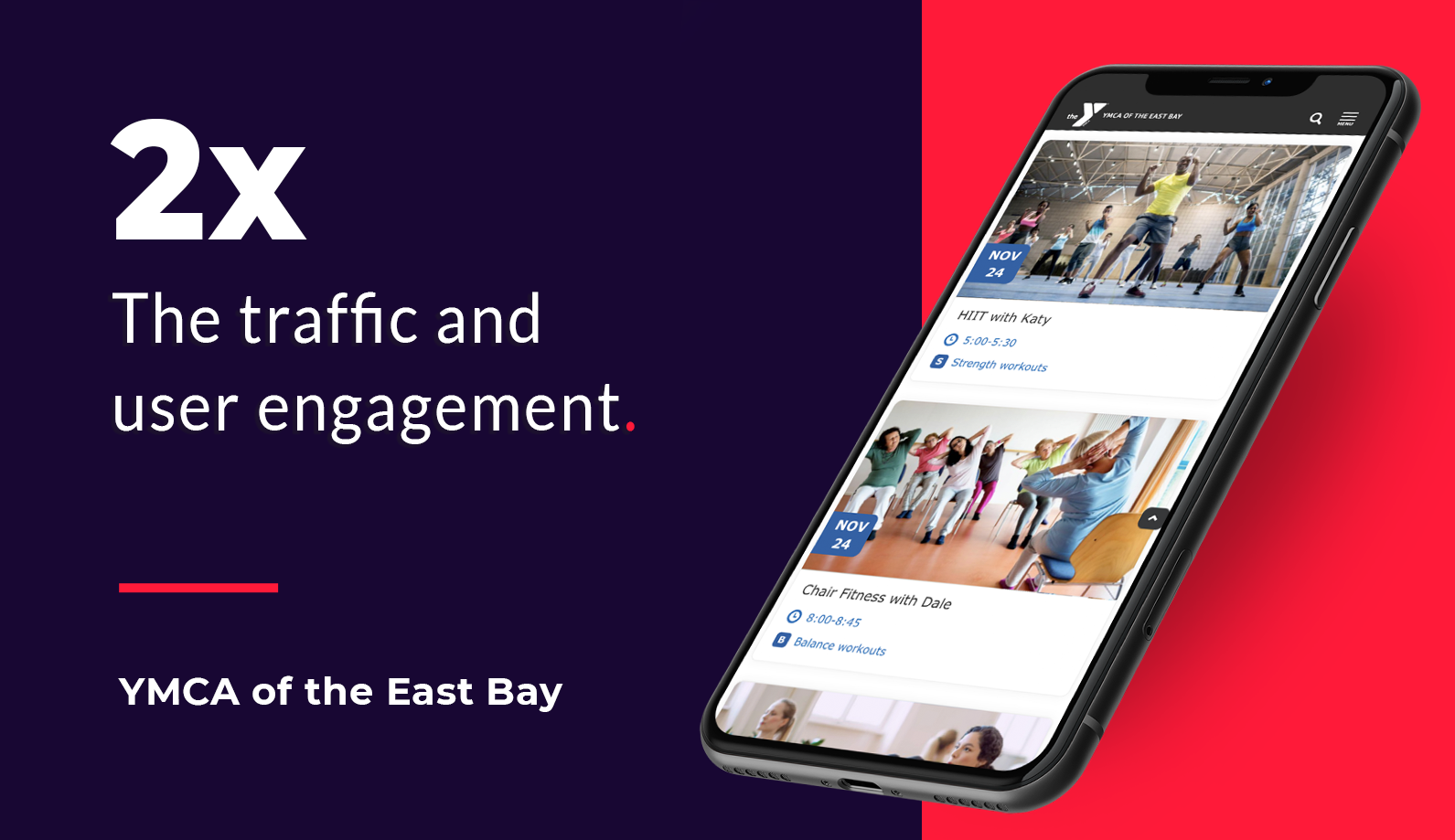Top Tips for Nonprofit Content Marketing: Web Edition
Content marketing for nonprofit and non-governmental organizations is not an easy undertaking. It can be challenging to attract, engage, and retain supporters for a cause while having tight resources.
In addition, nonprofit marketers don’t have the opportunity to lure their audience with shiny products that offer immediate benefits. The benefits of getting involved as a nonprofit supporter lie much deeper — for instance, the joy of committing to a cause that makes an impact. As a nonprofit, it’s important that your content addresses these benefits.
We want to empower all nonprofit marketers to feel equipped with all the tools and tips they need for their content to shine. In addition to building websites that provide compelling digital experiences and easy editorial workflows, we often share valuable tips on making content experiences as optimized and targeted as possible. Next up is a collection of our articles dedicated to content marketing for nonprofits.
Selected tips to boost your nonprofit content marketing success
Build an emotional connection by telling stories
Nonprofit content marketing is very much about creating a profound emotional connection. What marketing tactic suits this purpose best? Undoubtedly, it is storytelling. Nonprofit websites tell stories that often involve real people in real situations. This helps nonprofit organizations inspire more donors, engage more volunteers, highlight their impact, and deepen their relationship with their community.
Before you start writing relatable stories that touch people’s hearts, ask yourself the following foundational questions:
- Who is your audience? It might be really insightful to create “user personas” so you gain a deep understanding of all your user groups and craft stories that resonate with them.
- What do they need? It’s about discovering your audience’s needs, goals, and motivations.
- How does your nonprofit uniquely meet these needs? Stories will help you highlight your organization’s unique features and differentiate it from others.
Discover our article on storytelling to get more details on each of these 3 steps, as well as on using the secret sauce of impactful stories — always making your audience the central characters.
Learn how storytelling can encourage donations
Now that we have run through the general principles of storytelling, it’s time to take a deeper dive into how stories can fulfill the most important goal of most nonprofit organizations — the encouragement of philanthropic generosity.
Indeed, philanthropists want to support the causes that are important to them, and they find them through online searches. Dinners and one-on-one meetings with potential donors have lost their past effectiveness. That said, your website’s content marketing plays a leading role in nurturing donors through the decision-making process. Storytelling as part of your marketing strategy will help you humanize your organization and let donors feel the positive impact you are making.
To create impactful stories, try the “cause and effect” framework — let donors visualize themselves as philanthropic heroes and show them all the direct positive change that comes from their contributions. Next, weave your stories throughout your website so donors can see them regardless of the page they’re on. Check out our article to take a closer look and gain additional storytelling tips, including a great example from our client — the YMCA of East Bay.

Give your content strategy an overhaul
We are living in a fast-paced world, so the content on your nonprofit’s website must be dynamic. You may reach a point where your site’s content strategy needs a refresh.
A content audit and refresh could be a little overwhelming, so our team has 5 great tips to get you started with revamping your content strategy. You could achieve tangible improvement without spending too much of your budget on outsourcing to a third-party agency.
As part of implementing these tips, you might want to ask yourself and your stakeholders a few important questions. Among them are what are your website’s key goals, the actions you want your audience to take (e.g. make a donation, apply to become a volunteer), your user personas (donors, volunteers, recipients, etc.), and the specific tasks that are essential to their user journey. Additionally, some key tools will help you audit your existing content before the optimization process.
Check out the full article and let it guide you in your efforts.
Take care of content accessibility
Even though website accessibility is demanded by law, minimizing legal risk is not the key benefit that inspires nonprofits to make their websites accessible. Nonprofits want to demonstrate their commitment to the values of equity and inclusion, embrace diverse audiences, and create social impact. Accessible sites ensure barrier-free communication with funders and volunteers and easy access to information about programs, causes, and services for people who need them.
Designers and developers work hard to weave accessibility into a website’s DNA. They have to adhere to an extensive list of requirements from the Web Content Accessibility Guidelines (WCAG). Then the baton goes to the content marketing team.
Creating content requires a complete understanding of how it will be consumed by users with assistive technologies. Is the text logically organized with subheadings? Are you using clear and straightforward language, avoiding fancy words, unexplained acronyms, and extremely long sentences? Are your images accompanied by ALT tags describing what’s on them? Do your audios/videos have captions or transcripts? Find these and many other content accessibility tips explained in our article.
Set your priorities and do work in sprints
The amount of work on making your nonprofit website accessible might look daunting and leave you unsure on where to start. After all, nonprofits and NGO websites typically have thousands of pages organized into different content types.
You may find that the solution to this challenge is using the Agile approach. In this case, you will need to:
- choose the most important pages of your nonprofit website from a strategic perspective (the homepage, the About Us page, the Mission Statement page, the pages for the most impactful programs and causes, etc.)
- map out a series of short sprints to work on improving the accessibility of the chosen pages (the gold standard is 2 weeks)
- after each sprint, test the result, make adjustments based on new feedback, and proceed to the next sprint.
Our experts’ article on an Agile approach to content accessibility will give you more practical details. You will learn about how Agile works, what analytics and accessibility-checking tools you could rely on, and how to meet the standards and prevent issues in the future by educating your content marketing specialists.
Lead supporters through your site with good UX writing
Content marketing is meant to capture your nonprofit’s supporter’s attention, educate them about your mission, and encourage them to get involved. However, there is also another type of writing for websites, which is meant to guide users through your nonprofit site, inform them on how to use it, and help them reach their goals.
UX writing isn’t exactly copywriting, even if it involves copy, which is also known as microcopy. For example, potential volunteers can see the “Join now” button and then be rewarded with a “Thank you” message that appears after the completion of an application form.
Check out this article to learn some best practices for UX writing. Just to name a few, they include choosing your words carefully, understanding your users, showing some creativity, and making everything straightforward and clear based on the famous “Don't Make Me Think” approach to UX.

Make content editing a breeze with a good CMS
Websites are built on different platforms, some of which offer much more help to content marketing teams than others. So it’s important to build your website on a CMS that makes content workflows a breeze. If your CMS is not very good at this, it’s never late to migrate your nonprofit website to another platform. You might also be happy to discover some nice editing features in your existing CMS that you haven’t used before, or that have been added to its more recent version. Let’s take a look at editorial efficiency in Drupal.
With easy content workflows being a priority in Drupal, the CMS is becoming more and more editor-friendly with each release. The Claro administration theme, the CKEditor, the Media Library, the Layout Builder, and the Content Moderation module are some examples of the built-in Drupal features that could considerably save your team some time.
In addition to the built-in functionality, there are a wealth of community-created tools that we described in our collection of contributed Drupal modules for editorial efficiencies. Discover how they can help you automatically publish or unpublish specific pieces at a specific time in the future, quickly moderate them, check their accessibility, and more.
Final thoughts
Hopefully, with these tips and tricks, your nonprofit website will be doing an exceptionally good job at gathering supporters around your mission, promoting your message, and increasing brand awareness. And our team of Drupal developers, designers, and marketing strategists, is always happy to help your organization make a positive impact in this world.






